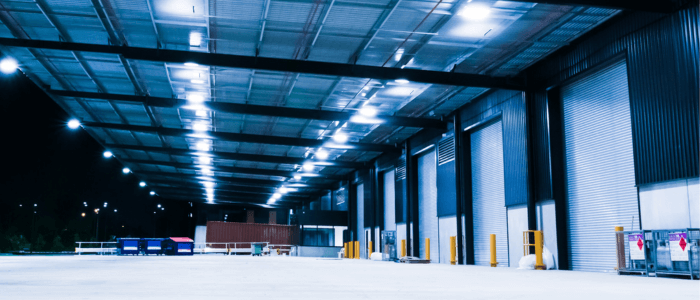The Australian Government announced the Budget 2022-23 in March. They have labelled it as ‘The next stage in leading Australia’s strong economy into the future.’ The Government has focused the plan on their below points:
- Delivering more jobs and working towards unemployment below 4 per cent;
- Investing in stronger defence, borders and security;
- Continuing record investments in health, education, women’s safety and other essential services;
- Delivering cost of living relief for Australians and supporting small businesses;
- Investing in the roads, rail, dams and renewable energy technology, that will build our future.
What does the budget 2022-23 announcement mean for property investors?
We take a look at a few key points that we feel are relevant for property investors:
Housing Affordability
The Government says they will be helping more Australians to own a home. The Treasurer Mr Frydenberg stated:
“HomeBuilder, the First Home Super Saver Scheme and the Home Guarantee Scheme have helped make the dream of home ownership a reality.
Over the last year, 160,000 Australians purchased their first home.
Tonight we go further, more than doubling the Home Guarantee Scheme to 50,000 places per year.
Helping more single parents to buy a home with a deposit as low as 2 per cent.
Helping more first home buyers to buy a home with a deposit as low as 5 per cent.
In this Budget we are also increasing our support for affordable housing by $2 billion through the National Housing Finance and Investment Corporation.
Helping more Australians to own a home is part of our plan for a stronger future.”
Paying off your property is now a bigger financial commitment than ever, but renting a portion of your home is allowable under the Home Guarantee, Single Parents, First Home Buyers schemes, and this can assist with cash flow and repayments.
For example:
- A granny flat could be added to a brand-new build or purchased as part of an existing build. Granny flats can create additional income for the owner as well as help reduce their taxable income by claiming the available tax deductions. One tax deduction is depreciation which can total thousands;
- Renting out a room can help with mortgage payments. Many home-owners are renting out a room or rooms whilst living in the property. This creates additional cash flow to the owner to help pay off the mortgage. As a portion of the property becomes income-producing they are also entitled to claim depreciation over the qualifying areas of the property as well as other tax deductions.
To ensure accurate, compliant and maximum deductions, it is recommended that you use a quantity surveyor to produce your depreciation schedule. The cost of a schedule is a one-off fee that is also 100% tax deductible, and can mean thousands of dollars of difference to your cash flow. It is highly recommended to organise a tax depreciation schedule as soon as the property is income producing.
Following investment in infrastructure
The Government announced a regional investment package that includes substantial investments in agriculture, infrastructure and energy in the Hunter, the Pilbara, the Northern Territory and North and Central Queensland.
“These long-term investments will unlock new economic frontiers and grow our national economy.” Mr Frydenberg said.
The Treasurer also stated, “Our regional package also includes major new investments in water projects, a new regional accelerator, telecommunications and health.”
The Budget also includes new commitments to road and rail projects.
“Brisbane to Sunshine Coast faster rail. Sydney to Newcastle faster rail. The METRONET project in Western Australia. The North South Corridor in South Australia. Great Eastern Drive in Tasmania. Central Australian Tourism Roads in the Northern Territory. Melbourne Intermodal Terminals to increase the efficiency of the national freight network.
More than $500 million for local councils to deliver priority projects and $880 million to better connect regional Australia with ports, airports, and other transport hubs.” Said Mr Frydenberg.
The infrastructure investment package could see capital growth in some areas along with forecasted value capture with monies being spent on road projects and faster rails. Suburbs that were once not considered suitable for investment may now been seen as a better opportunity.
Remember to do your due diligence research, as there are always pros and cons with following infrastructure investment, and check in with your financial advisers regarding your specific investment strategy.
Negative Gearing
For six-years Labor ran a campaign to limit negative gearing to new properties only. This campaign was discarded in July 2021 due to resistance from the government, the property industries, the construction industries and investors. Negative gearing has been taken off the table for now and will continue in the foreseeable future. This means investors can now purchase with some certainty around cash flow projections.
What is negative gearing?
As stated by the Australia Taxation Office, a rental property is said to be ‘negatively geared’ if a person’s deductible expenses are more than the income that they have earned from the property.
“The overall tax result of a negatively geared property is a net rental loss. In this case, you may be able to claim a deduction for the full amount of rental expenses against your rental and other income – such as salary, wages or business income. If your other income is not enough to absorb the loss, you can carry forward your loss to the next income year.” Australian Taxation Office.
Claiming depreciation and how it affects cash flow for a negatively geared property
Our clients Bobby and Julia investment property generates a rental income of $455 per week. The table below outlines what the figures are for our clients Bobby and Julia with them not claiming and claiming depreciation:
The “No Depreciation” column shows the cash flow position if no depreciation is claimed – it is making a loss of $2,840 per annum, which for this property investor means a tax refund of $923. Our client’s investment property is cash flow negative $159.75 every month. This negatively geared property is also cash flow negative.
With our clients claiming depreciation, the paper loss is increased to $15,852 per annum. The tax refund is boosted to $5,151.90, and the investment property is now cash flow positive $192.66 every month - a turnaround of $352.40 every month! This negatively geared property is now cash flow positive.
Whether your property investment strategy is negatively or positively geared, it’s best to organise a tax depreciation schedule from a qualified quantity surveyor like us, here at Capital Claims Tax Depreciation.
By claiming your available tax depreciation deductions, you could be potentially reducing your taxable income by thousands each financial year. Call us on 1300 922 220 or send us an email at info@capitalclaims.com.au.








